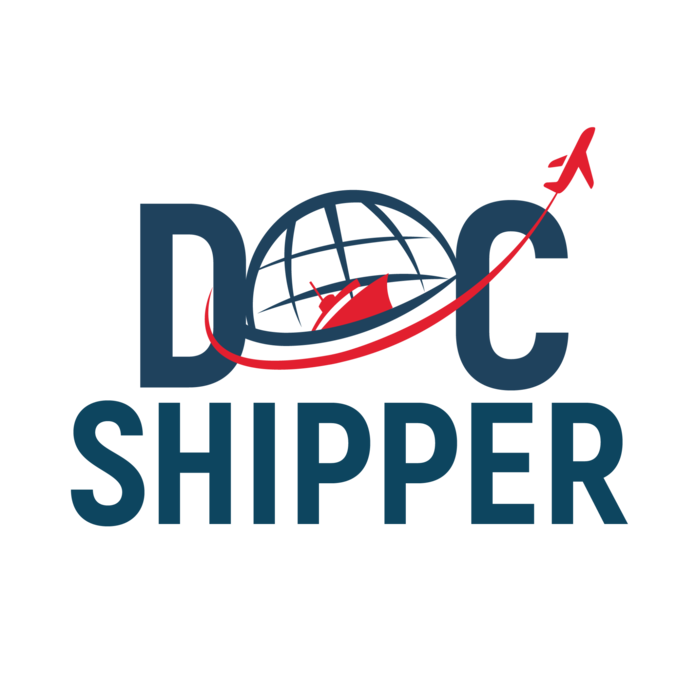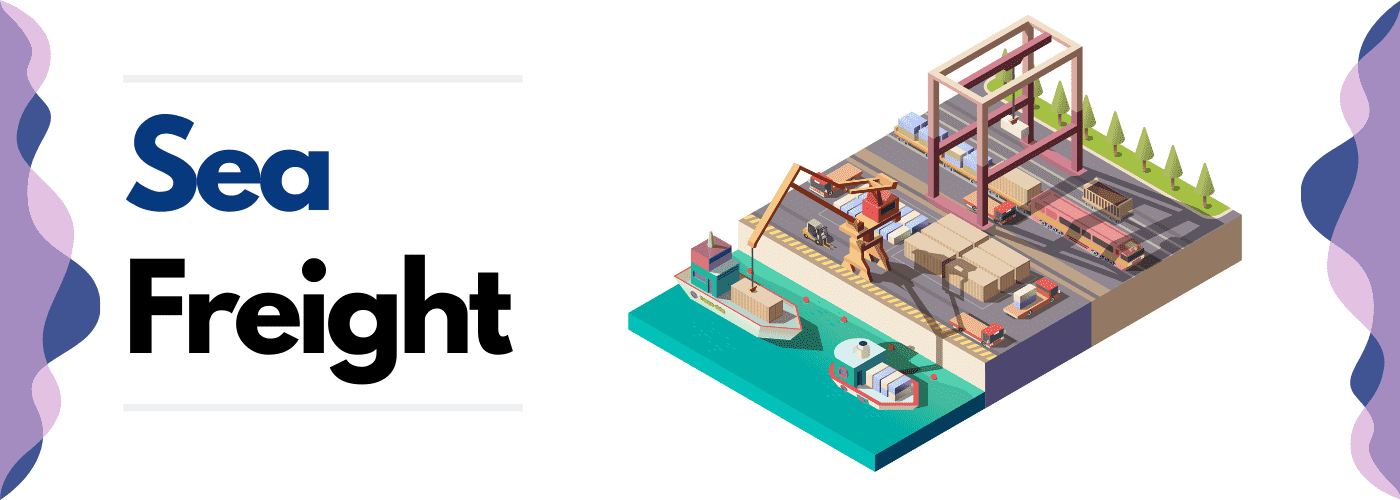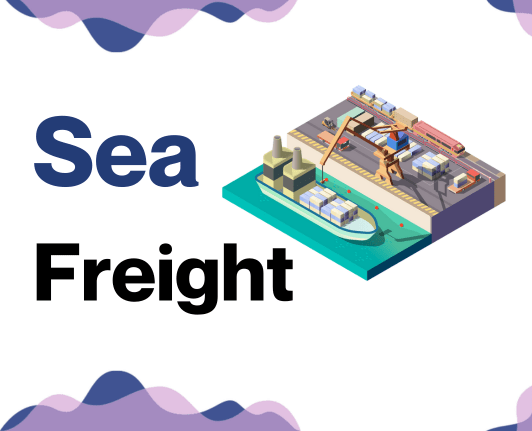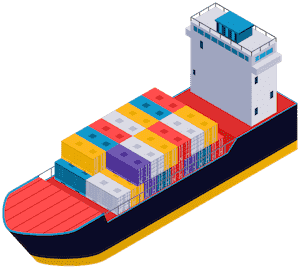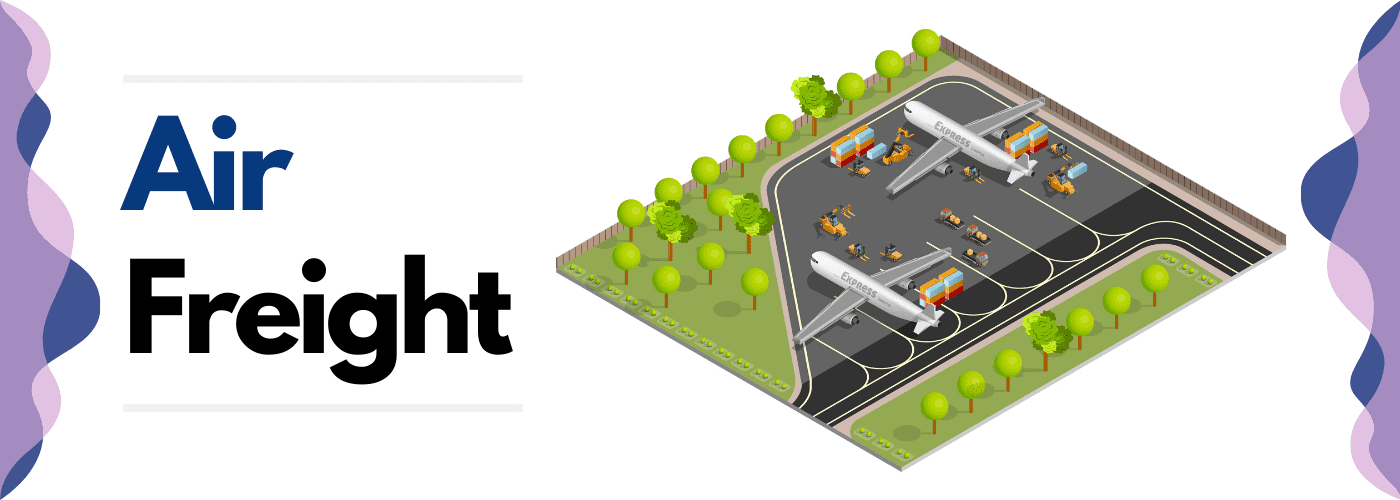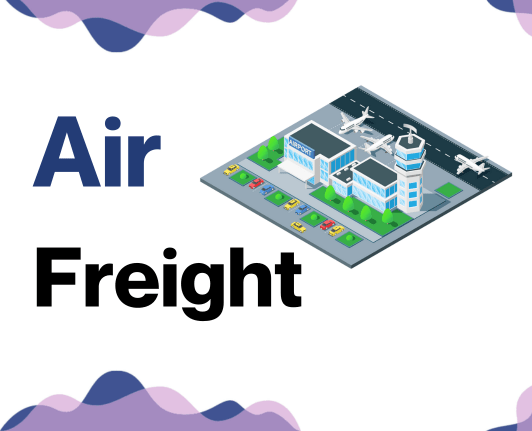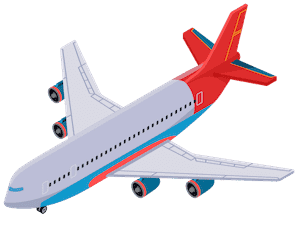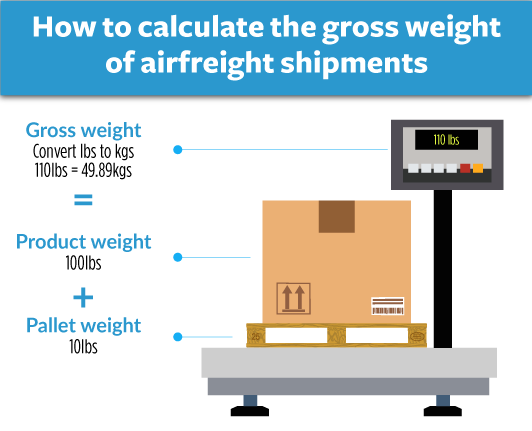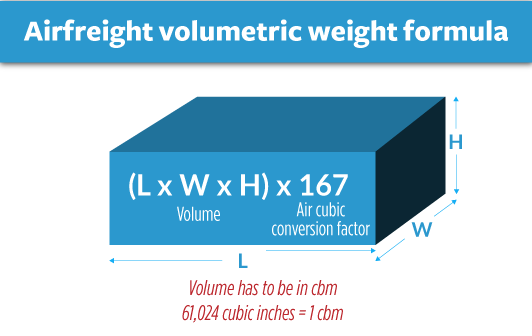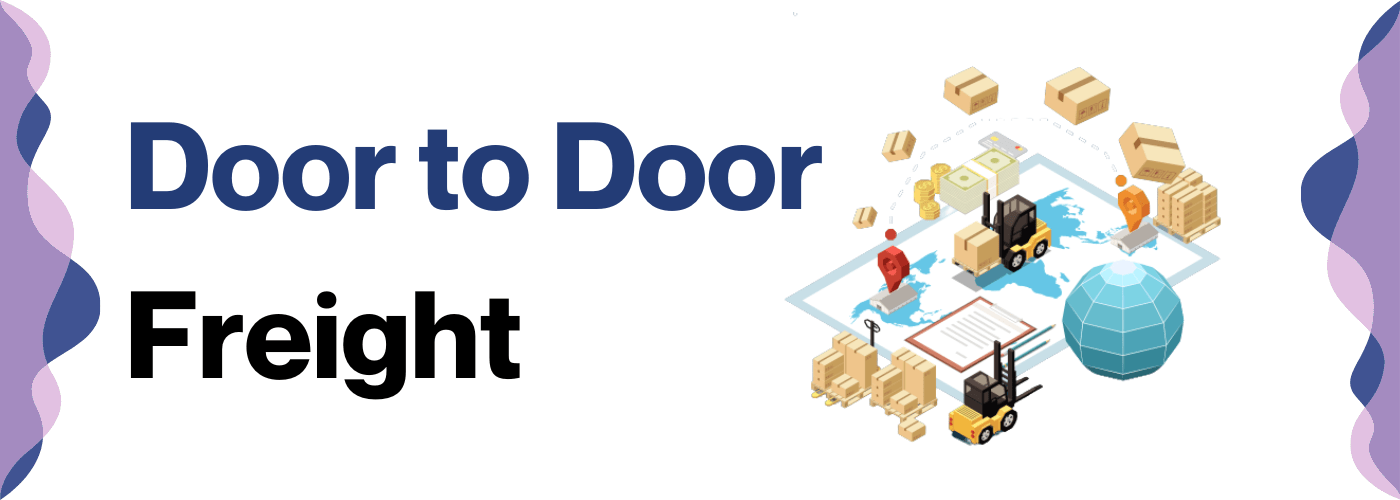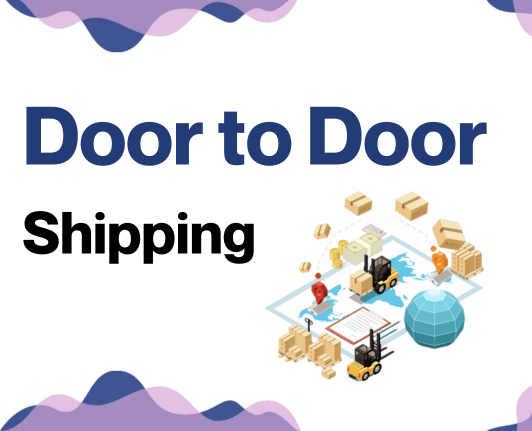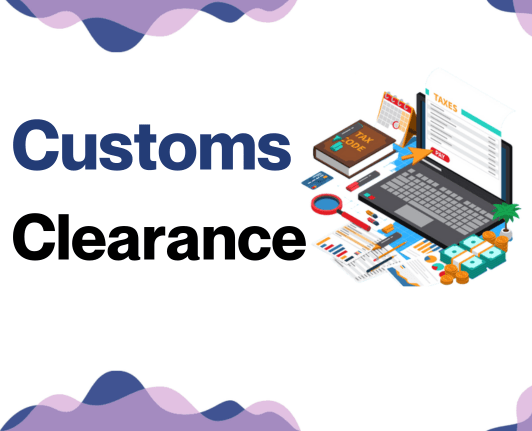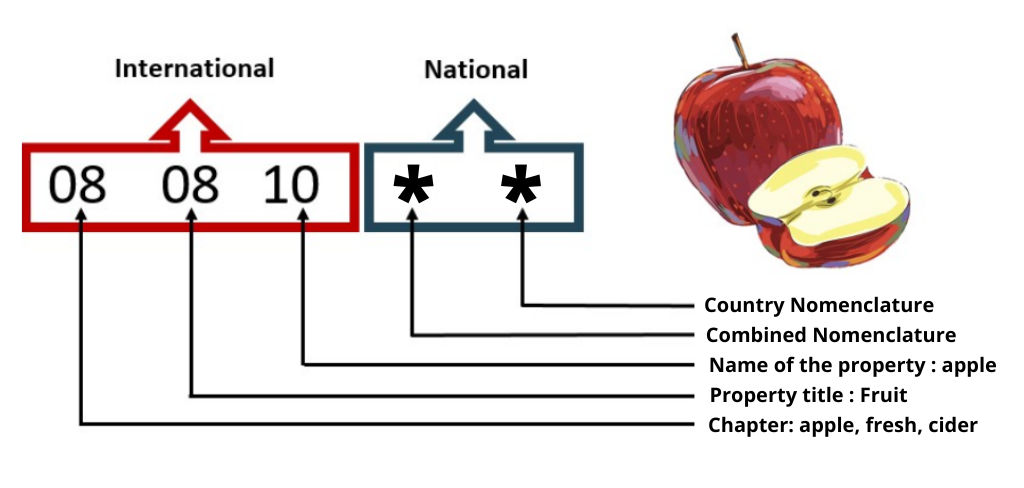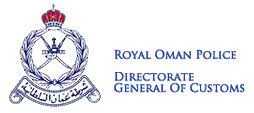Shipping goods from the US to Oman is like managing a camel race—chaotic, unpredictable, and every move counts! From deciphering intricate shipping rates and figuring out transit times, to traversing complex customs laws, each step poses a unique challenge. This guide will serve as your compass, directing you through the wilderness of international freight. We'll explore various freight options suited for your business, decode the customs clearance labyrinth, offering a deep dive into duties, taxes, and provide focused advice to streamline your shipping process. If the process still feels overwhelming, let DocShipper handle it for you! As your international freight forwarder, we transform logistics hurdles into smooth sails, ensuring your business reaches the finish line every time.
Table of Contents
ToggleWhich are the different modes of transportation between US and Oman?
Choosing the right way to ship goods from the US to Oman is a bit like picking the best route on a road trip – it demands careful planning! You can't simply drive straight through due to the distance and international borders. So, you might have to consider hopping on a plane (air freight) or maybe even taking the sea route (ocean freight). Your airline ticket or cruise package, in this case, aligns with your unique shipping needs. Remember, the best method smoothly handles the distance and smooths over international logistics bumps!
How can DocShipper help?
Do international shipping hassles have you perplexed? Allow DocShipper to simplify your journey from the US to Oman. We handle everything from arranging the transport, tackling customs issues to streamlining administrative procedures. Why wait? Tap into our expert services today. Get a free estimate in less than 24 hours or call our consultants for free advice. Let us make your shipping worry-free!
DocShipper Tip: Sea freight might be the best solution for you if:
- You are shipping large volumes or bulky items, as sea freight offers the most space at a cost-effective rate.
- Your cargo doesn't have an urgent deadline, as sea freight typically has longer transit times compared to air or rail.
- Your shipping routes are between major ports, allowing you to leverage the extensive global network of sea shipping lanes.
Sea freight between US and Oman
The growth of trade between the US and Oman has put ocean shipping in the spotlight as a cost-effective means of transporting high-volume goods. Vital to this linkage are major cargo ports like Sohar and Salalah on the Arabian peninsula's edge, and ports like Los Angeles and New York on the American coasts. Sea freight, while economical, often poses the challenge of a longer transit time.
However, the real test begins when businesses and shippers face complexities in the international shipping protocols between these two nations. It's akin to being in a maze where every turn seems the same, yet the exit seems elusive. Misinterpretations of shipping legislations or overlooking crucial specifications may result in landed costs reaching the sky, almost like an unchecked helium balloon. But don't let your shipping expenses take off in the same way! In this guide, we'll share best practices and vital specifics to help you avoid common pitfalls and turn ocean shipping into a smooth sailing experience.
Main shipping ports in US
Port of Los Angeles
Location and Volume: Located in San Pedro Bay, 20 miles south of downtown Los Angeles, this port is an essential hub for the Pacific trade with a volume of over 9.3 million TEUs in 2020.
Key Trading Partners and Strategic Importance: Its main trading partners are China, Japan, Vietnam, Taiwan, and South Korea. The port's strategic importance lies in its heavy infrastructure, which allows handling of large volume cargo with efficiency.
Context for Businesses : If you're looking to expand your business in the Asia-Pacific region, the Port of Los Angeles may play a crucial role given its extensive network and express connections to the Asian markets.
Port of Long Beach
Location and Volume: Next-door to the Port of Los Angeles, in San Pedro Bay, the Port of Long Beach boasts of shipping volume of over 7.6 million TEUs in 2020.
Key Trading Partners and Strategic Importance: Primary trading partners are similar to the Port of Los Angeles with China, South Korea, Japan, Vietnam, and Taiwan. The port is renowned for its state-of-the-art cargo handling facilities ensuring quick delivery times.
Context for Businesses : If your business requires an efficient and reliable shipping avenue to Asia, the Port of Long Beach could be your go-to solution due to its advanced facilities and extensive maritime connections.
Port of New York and New Jersey
Location and Volume: Located in the Hudson River, this port is crucial for trade on the Atlantic with a shipping volume of over 7.5 million TEUs in 2020.
Key Trading Partners and Strategic Importance: Major trading partners comprise China, India, Germany, Italy, and Netherlands. It holds strategic importance as the main gateway for northeastern US goods.
Context for Businesses : If your business route involves the markets in Europe and the Indian subcontinent, the Port of New York and New Jersey, with its extensive hinterland connections, could support your logistics needs.
Port of Savannah
Location and Volume: Nestled in Georgia, this port is significant for southeastern US trade, with a shipping volume of 4.6 million TEUs in 2020.
Key Trading Partners and Strategic Importance: The port regularly trades with Central and South American countries, China, and India. Its usage of both railway and highway networks for swift transportation only adds to its strategic significance.
Context for Businesses : Considering expansion in Central or South American markets? The Port of Savannah, with its robust transport network, could benefit your logistics plan.
Port of Seattle
Location and Volume: Set in the Pacific Northwest, this port is vital to industries like fishing and lumber, handling over 3.5 million TEUs in 2020.
Key Trading Partners and Strategic Importance: Primary trading partners are China, Japan, South Korea, Taiwan, and Vietnam. The port is strategic for its refrigerator services for perishable goods.
Context for Businesses : If your business mainly exports perishable goods or products to Asia, the Port of Seattle with its advanced refrigerating services may prove advantageous.
Port of Houston
Location and Volume: The Port of Houston, located in Texas, is key for Gulf Coast trade, with a shipping volume of over 2.9 million TEUs in 2020.
Key Trading Partners and Strategic Importance: The port heavily trades with Mexico, China, Brazil and Germany. Its strategic importance is associated with the local oil industry.
Context for Businesses : If your business is related to the petroleum or petrochemical industry, the Port of Houston, serving as a vital trade link for these industries, might be of considerable business importance for you.
Main shipping ports in Oman
Port of Sultan Qaboos
Location and Volume: Situated in Muscat, Oman's capital city, this port is known for its robust commercial activity, handling over 3 million tonnes of general cargo annually.
Key Trading Partners and Strategic Importance: The port primarily deals with India, UAE, and Singapore. Its strategic location near key East-West shipping lanes makes it a significant player in the global logistics network.
Context for Businesses: If developing a robust trading network among the Middle East and South Asian markets appeals to your strategy, incorporating Port of Sultan Qaboos in your logistics could substantially benefit your operations, considering its vast capacity and strategic location.
Port of Salalah
Location and Volume: Set along the Arabian Sea, the Port of Salalah ranks as one of the world's largest transshipment ports, managing over 3 million TEU annually.
Key Trading Partners and Strategic Importance: Major trading partners include the USA, UAE, and China. The port is recognized globally and has received 'Best Transshipment Port' awards on numerous occasions.
Context for Businesses: Exploring large-scale transshipment options or aiming for markets in Asia, the US, or the Middle East? Given its enormous volume and recognition, Port Salalah should ideally form an integral part of your consideration.
Port of Sohar
Location and Volume: Located in the Al Batinah region of Oman, this industrial port handles over 1 million TEU, making it a crucial link in the region's supply chain.
Key Trading Partners and Strategic Importance: The port's key trading partners are China, UAE, and India. It also enjoys a strategic position near the Strait of Hormuz, a major global oil supply route.
Context for Businesses: If you plan to tap into China's, UAE's, or India's markets, or diversify to include energy resources, the utilitarian character of Port of Sohar, combined with its strategic location, provides a competitive edge.
Port of Duqm
Location and Volume: Situated in the southeastern part of Oman, it's an up-and-coming port that handles approximately 1 million tonnes of dry bulk and liquid bulk cargo.
Key Trading Partners and Strategic Importance: Main partners are regional and include UAE, Saudi Arabia, and Qatar. It boasts a strategic location in close proximity to the Indian Ocean.
Context for Businesses: If targeting markets in the Gulf and beyond, Port of Duqm, given its emerging stature and strategic location, offers significant potential for establishing a strong logistics foothold.
Port of Khasab
Location and Volume: Nestled in the Musandam Governorate, this port is essential for ferry traffic and serves as a hub for the fishing industry.
Key Trading Partners and Strategic Importance: The port mainly deals with Iran and the UAE. This key sea gateway promotes bilateral trade between Oman and these nations.
Context for Businesses: If your operations involve the fishing industry or you wish to expand to Iran or UAE, incorporating the Port of Khasab into your logistics may prove to be a wise strategic move.
Port of Shinas
Location and Volume: Situated near the UAE-Oman border, this small but strategic port processes closely to 30,000 TEU annually.
Key Trading Partners and Strategic Importance: The port's key trading partners are UAE and Iran. Given its location, it acts as a lynchpin in the Oman-UAE trade corridor.
Context for Businesses: If the UAE or the Iranian market is part of your growth strategy, Port of Shinas' pivotal role in the trade corridor could help streamline your shipping processes effectively.
Should I choose FCL or LCL when shipping between US and Oman?
Choosing between Full Container Load (FCL) and Less than Container Load (LCL), often referred to as consolidation, can make or break your logistics experience when shipping from the US to Oman. This critical decision influences costs, timelines, and overall shipping effectiveness. To ensure you're making the most informed choice, it's vital to comprehend their differences. As we delve deeper, we'll arm you with the knowledge to find the best sea freight option for your unique needs, enhancing your shipping efficiency. Stay tuned!
LCL: Less than Container Load
Definition: LCL, or Less than Container Load, describes a method of shipping whereby multiple shippers share space in the same shipping container. This option is known for its price flexibility, particularly for low-volume shipments.
When to Use: Typically, if your cargo is less than 13, 14, or 15 CBM, you might want to consider an LCL shipment. It provides smaller businesses or those with less hefty shipments an affordable, accommodating option.
Example: For instance, let's say you're a U.S. firm that manufacturers specialty coffee roasters and you received an order for two machines, totaling 8 CBM from a café in Oman. A full container would be too much space and, thus, costly. Instead, an LCL freight option would make the most sense, as it allows your machines to share container space with other goods headed to the same destination.
Cost Implications: For smaller shipments like our coffee roaster example, LCL freight is a savvy choice. This is because shipping charges are based on the volume that your cargo occupies in the shared container, which is generally cheaper than paying for a full container. However, remember, costs may vary based on factors like the cargo’s nature, its final destination, and the freight forwarder you work with.
FCL: Full Container Load
Definition: FCL, or Full Container Load, entails exclusive usage of a container, generally a 20'ft or 40'ft container, by a single shipper, from origin to destination, enhancing safety by ensuring the container remains sealed throughout transit.
When to Use: FCL is ideal when your cargo volume exceeds 13/14/15 cubic meters (CBM). High volume makes FCL shipping cost-effective as the per-unit cost decreases with increasing amount of shipped goods.
Example: Suppose you're shipping 16 CBM of apparel from New York to Muscat. In this case, it'd be cheaper to use an FCL container instead of choosing LCL (Less than Container Load). Using FCL ensures your garments are not mixed with other shipments, offering added security.
Cost Implications: While the upfront fcl shipping quote may seem higher, the unit cost (cost per CBM) is lower for larger volumes. 20'ft containers typically take about 28-30 CBM, and 40'ft containers hold approximately 54-60 CBM. So, once your cargo surpasses the 13/14/15 CBM mark, FCL becomes the cheaper and safer freight option.
Unlock hassle-free shipping
Choosing between consolidation and full container shipping from US to Oman? Let DocShipper make it hassle-free. Our ocean freight experts consider your cargo type, volume, and urgency to recommend the optimal choice. We aim to simplify global trade experiences for businesses in a cost-effective way. Interested in making informed decisions about your shipping needs? Request a free estimate today. Leverage DocShipper's expertise for your peace of mind.
How long does sea freight take between US and Oman?
The journey across the seas from the United States to Oman typically takes on average between 28 to 33 days. When calculating these transit times, various factors come into play such as the specific ports of departure and arrival, the overall weight and nature of the goods being shipped. However, these are just averages and individual shipments may vary, so we recommend contacting an expert freight forwarder like DocShipper for a tailored quote specific to your requirements.
Following is an estimation of average transit times between the main ports in both countries:
| US Port | Oman Port | Average Transit Time (days) |
| Port of Los Angeles | Port of Sohar | 35 |
| Port of Houston | Port of Salalah | 25 |
| Port of Savannah | Port of Sohar | 24 |
| Port of Newark | Port of Salalah | 20 |
*Please bear in mind that these times are subject to change based on various factors involved in sea freight. Always consult with your freight forwarder for exact shipping times.
How much does it cost to ship a container between US and Oman?
Decoding the costs of shipping a container from the US to Oman can feel like a puzzle. While we can provide a broad range for sea freight rates—from $20 to $200 per CBM—some variables prevent us from offering a one-size-fits-all shipping cost. Everything from Point of Loading and Destination to the nature of goods and carrier drastically influences the final price. Let's not forget the swing of monthly market fluctuations. However, fear not, our experienced shipping specialists are committed to helping you navigate through this, offering personalized, cost-effective quotes best suited for your business. Shipping internationally shouldn't be daunting and we're here to ensure that it isn't.
Special transportation services
Out of Gauge (OOG) Container
Definition: Out of Gauge (OOG) containers are specialized sea freight option designed for cargo that exceeds standard container dimensions (measurements). These enable transport of larger goods that do not fit into regular closed containers.
Suitable for: Equipment, machinery, large sculptures, oversized goods and other anomalies.
Examples: Windmill blades, industrial machinery, construction equipment.
Why it might be the best choice for you: If your cargo is oversized and cannot fit within a standard container's dimensions, then OOG containers offer a safe, secure, and convenient sea freight option.
Break Bulk
Definition: Break bulk is a shipping method where goods are loaded individually rather than in containers. Handy where goods cannot fit or are not suited for standard containers.
Suitable for: Large items that cannot be containerized, hazardous materials, construction equipment.
Examples: Pipes, steel girders, timber logs.
Why it might be the best choice for you: If you're shipping large or irregularly-sized items that are difficult to containerize, break bulk could provide the flexibility and tailor-made solution you need.
Dry Bulk
Definition: Dry bulk involves the shipping of goods in large quantities, loaded directly into a ship's hold and not arranged in any specific packaging.
Suitable for: Commodity products such as grains, coal, and metals.
Examples: Corn, aggregates, iron ore.
Why it might be the best choice for you: If you're dealing with loose cargo load of raw, granular products like grains or minerals, dry bulk is an efficient and cost-effective choice.
Roll-on/Roll-off (Ro-Ro)
Definition: Ro-Ro is a shipping method in which vehicles and machinery are driven on and off the ro-ro vessel on their wheels or using a platform vehicle.
Suitable for: Cars, trucks, semi-trailer trucks, trailers, and railroad cars.
Examples: Cars, agricultural machinery, cranes.
Why it might be the best choice for you: If you're transporting vehicles or mobile machinery. Ro-Ro is designed for cargo that drives on its own or on a trailer, making it an ideal choice.
Reefer Containers
Definition: Reefer containers are refrigerated shipping containers used to transport goods requiring a certain temperature to remain fresh or stable.
Suitable for: Perishable goods like seafood, fruits, vegetables, meat, and some pharmaceuticals.
Examples: Chilled meat, forzen fish, vaccines.
Why it might be the best choice for you: If your cargo requires temperature control for preservation and quality, then reefer containers provide a secure, climate-controlled environment.
Regardless of your freight, DocShipper offers tailored shipping solutions for your business. Reach out to us for your free shipping quote in less than 24 hours!
DocShipper Tip: Air freight might be the best solution for you if:
- You are in a hurry or have a strict deadline requirement, as air freight offers the fastest transit times.
- Your cargo is less than 2 CBM (Cubic Meter), making it more suitable for smaller shipments.
- Your shipment needs to reach a destination that is not easily accessible by sea or rail, allowing you to tap into the extensive network of global airports.
Air freight between US and Oman
Real talk, shipping goods via air freight from the US to Oman? Speed is king. Your lightweight, high-value items like pharmaceuticals or electronics can zip right over in no time. Think of air freight as a superhero: fast, reliable, and able to jump over oceanic distances in a single bound. Then, there's cost-effectiveness for small shipments. It's like packing an overnight bag for a quick flight versus hauling an oversized suitcase.
However, some shippers stumble by not considering all elements involved. Envision cooking a gourmet meal, but the recipe is incomplete. Missteps like improper weight calculations, or overlooking best practices can inflate prices, draining resources faster than a thirsty Camel in the scorching Omani desert. We'll lay bare these common pitfalls in the following sections to help you chart a smoother air freight journey.
Air Cargo vs Express Air Freight: How should I ship?
Juggling between Air Cargo and Express Air Freight for your US to Oman shipment? Your business needs can dictate the right choice. Simply put, Air Cargo makes use of passenger airlines for shipping your goods, while Express Air Freight dedicates an entire plane to rush your freight to its destination. Delve into the ins and outs of both methods to discern the best fit for your precious cargo.
Should I choose Air Cargo between US and Oman?
Choosing air cargo for shipments between the US and Oman can be a cost-effective and reliable option, especially for cargo around 100/150 kg (220/330 lbs). Airlines like American Airlines and Oman Air are known for their robust freight services. However, bear in mind that air cargo runs on fixed schedules, which might lead to longer transit times. If your budget aligns with this method, air cargo could potentially fulfill your freight needs. Keep an eye out because selecting the right mode of transport is key to successful international trading.
Should I choose Express Air Freight between US and Oman?
When shipping small quantities under 1 CBM or 100/150 kg (220/330 lbs) between the US and Oman, express air freight is a robust choice. This specialized service, offered by trusted firms like FedEx, UPS, or DHL, employs dedicated cargo aircraft, providing prompt and secure delivery. For urgent imports/exports or time-sensitive goods, express air freight ensures your cargo reaches its destination swiftly. The high-priority access these providers enjoy at airports worldwide further minimizes transit delays. Be aware, their services come at a premium, but the advantages often outweigh the costs. The convenience and peace of mind provided might make this the ideal shipping method for your needs.
Main international airports in US
Los Angeles International Airport(LAX)
Cargo Volume: Over 2 million metric tonnes in 2020.
Key Trading Partners: Asia (particularly China, Japan, and South Korea), Europe and Australia.
Strategic Importance: Being on the West coast, it offers the quickest link between the Americas and Asia, a major global manufacturing hub.
Notable Features: The 10th busiest cargo airport globally, with modern infrastructure and advanced cargo handling facilities.
For Your Business: If your business deals heavily with Asian markets, Los Angeles’s location and connections make for efficient and quick logistics.
Chicago O’Hare International Airport(ORD)
Cargo Volume: Over 2.1 million metric tonnes in 2020.
Key Trading Partners: Europe (especially Germany), Asia, and Mexico.
Strategic Importance: Serves as a major hub for both domestic and international travel, providing access to a wide range of locations.
Notable Features: Boasts a dedicated O'Hare Northeast Cargo Center which significantly expands cargo handling capacity.
For Your Business: If diversification of supply routes and access to domestic and global markets is key, Chicago’s central location and extensive network could be beneficial.
Miami International Airport(MIA)
Cargo Volume: Over 2.3 million metric tonnes in 2020.
Key Trading Partners: All Latin American countries and Europe.
Strategic Importance: Acts as the principal gateway between the US and Latin America.
Notable Features: Houses the Miami Free Zone allowing for tax advantages and efficient customs clearance.
For Your Business: If your business trades predominantly with Latin America, Miami’s bustling trade with these regions could greatly simplify and quicken your shipping process.
John F. Kennedy International Airport(JFK)
Cargo Volume: 1.3 million metric tonnes in 2020.
Key Trading Partners: Europe, North & Latin America, and Asia.
Strategic Importance: Acts as one of the main entry points into the US from the Atlantic side.
Notable Features: Home to many major airlines, making it a major hub for international carriers.
For Your Business: If your trading partners are widely spread geographically, the diverse connections offered by JFK might be just what your logistics strategy needs.
Memphis International Airport(MEM)
Cargo Volume: Over 4.6 million metric tonnes in 2020.
Key Trading Partners: Europe and China.
Strategic Importance: It's the global air hub for FedEx making it the busiest cargo airport in the world.
Notable Features: Offers late cut-off times and overnight delivery services due to FedEx services.
For Your Business: If time is of the essence and your business operates on tight schedules, Memphis's overnight delivery and late cut-off times will definitely be of value to you.
Main international airports in Oman
Salalah Airport
Cargo Volume: 24,900 metric tonnes in 2019.
Key Trading Partners: India, UAE, and China.
Strategic Importance: Located in Oman's only free zone with a sea port, Salalah Airport serves as a vital link in the global trade route between Asia, Africa, and Europe.
Notable Features: The airport has a modern cargo terminal with a capacity of 100,000 metric tonnes annually. It also has direct road links to the port and the free zone.
For Your Business: Given its strategic location and handling capacity, Salalah Airport can accommodate large-scale operations and cater to your business needs for efficient and cost-effective air freight solutions.
Muscat International Airport
Cargo Volume: Over 200,000 metric tonnes in 2019.
Key Trading Partners: UAE, India, and China.
Strategic Importance: As the main international airport in Oman, Muscat International plays a pivotal role in connecting Oman to the global market.
Notable Features: The airport features a standalone cargo terminal with a capacity of 350,000 metric tonnes annually, including temperature-controlled facilities for sensitive goods.
For Your Business: Muscat International Airport could be an ideal choice for businesses looking to ship goods quickly and safely, especially for temperature-sensitive commodities like pharmaceuticals and perishables.
Cargo Volume: The airport is growing, with most cargo volumes currently handled via the adjacent seaport.
Key Trading Partners: Primarily regional partners through regular freight charter services.
Strategic Importance: Even though it's newly opened, Sohar Airport's proximity to Sohar Industrial Port and Freezone gives it potential for significant cargo operations in the future.
Notable Features: The airport delivers a wide array of modern facilities. Although primarily serving passenger flights presently, plans for cargo expansion are underway.
For Your Business: While Sohar Airport is not a primary cargo hub now, it's worth keeping an eye on for future expansions and its potential to link your business to significant regional markets.
Cargo Volume: The airport is relatively new, thus cargo volumes are currently developing.
Key Trading Partners: Regional trading partners, with cargo operations expanding.
Strategic Importance: Strategically located near the Duqm Special Economic Zone, it's expected to become a significant player in cargo movements in the near future.
Notable Features: The airport plans to facilitate large industrial and petrochemical projects in the Duqm region by handling oversized cargo.
For Your Business: Keep an eye on this airport if your business intends to be part of the long-term industrial developments in Oman, as the airport grows to cater to the needs of these specific sectors.
Please note that while these airports primarily serve passenger flights, they have facilities and operations to accommodate air cargo, making them part of the global air freight network. Deciding on the best airport for your business depends on your specific needs, trading partners, types of goods, and strategic goals.
How long does air freight take between US and Oman?
Shipping between the US and Oman by air freight typically takes an average of six to eight days. However, do note that transit times can fluctuate quite substantially depending on factors such as the specific departure and arrival airports, the weight and dimensions of your shipment, and the nature of the goods you're exporting. Hence, to get a precise estimate tailored to your freight, it is best to consult with an experienced freight forwarder like DocShipper.
How much does it cost to ship a parcel between US and Oman with air freight?
Shipping an air freight parcel from the US to Oman typically costs around $3 to $5 per kg. It's important to understand that the final price depends on various factors, including the package's weight, dimensions, type of goods, and the proximity to the departure and arrival airports. Due to these variables, it's unfeasible to provide an exact quote upfront. However, our team recognizes these complexities and is committed to offering competitive and personalized quotations based on your specific needs. Contact us to receive a free quote within 24 hours, tailored to your shipment's unique requirements.
What is the difference between volumetric and gross weight?
Gross weight refers to the absolute weight of a shipment, including the goods and packaging material, usually calculated in kilograms (kg). Volumetric weight, on the other hand, considers both the weight and the space taken up by a shipment. It's crucial in air freight shipping where space is a limited resource.
To calculate the gross weight in air cargo, simply weigh your package in its ready-to-ship form. This gives you the physical total weight in kilograms. If you have a shipment weighing 50kg, that's approximately 110lbs.
The volumetric weight is a bit trickier. In Air Cargo, it's computed by multiplying the length, height, and width (all in centimeters) of each parcel, then dividing the total by 6000.
So, suppose you have a package of dimensions 40cm x 60cm x 50cm. The volumetric weight would be (40cm x 60cm x 50cm) / 6000 = 20kg (about 44lbs). Express Air Freight uses a slightly different divisor, 5000 instead of 6000. Therefore, the volumetric weight of the same package becomes (40cm x 60cm x 50cm) / 5000 = 24kg, converting to approximately 53lbs.
In comparing the two, the freight charges will be based on the higher of the gross and the volumetric weight - this keeps air freight shipping fair and efficient. For our example, the shipping fee would be based on the gross weight of 50kg, as it's greater than the volumetric weight. This illustrates why knowing and calculating both weights can increase cost effectiveness and optimize your shipping processes.
DocShipper tip: Door to Door might be the best solution for you if:
- You value convenience and want a seamless shipping process, as door-to-door takes care of every step from pickup to delivery.
- You prefer a single point of contact, as door-to-door services typically provide a dedicated agent to handle all aspects of the shipment.
- You want to minimize the handling of your goods, reducing the risk of damage or loss, as door-to-door minimizes transitions between different modes of transport.
Door to door between US and Oman
International door-to-door shipping means you let us handle everything while you relax. From pick-up in the US to delivery in Oman, we shoulder all the worry. This approach offers a hassle-free experience, often faster transit, and eliminates hidden costs, giving you priceless peace of mind. So hitch a ride with us, let's dive into the compelling world of door-to-door shipping!
Overview – Door to Door
Door to Door shipping from the US to Oman can be your ultimate stress-free logistics solution. It expertly manages complexities for you, including paperwork, customs, and the language barrier. Despite higher costs, businesses choose it to avoid the need for multiple transport providers, or potential miscommunication that can delay delivery. Capable of handling the whole journey, it brings peace of mind and is a favorite among DocShipper's clientele. Remember, choosing door-to-door means time saved, streamlined logistics, and ease of shipment tracking. However, selecting the right freight forwarder is a must to ensure they offer the service level your business requires.
Why should I use a Door to Door service between US and Oman?
Sick and tired of the logistics headache? Taking a Door to Door service might just be the magical aspirin you didn't know you needed. Let me spill the tea on the top 5 reasons why you'd want to choose this service for your shipments from the US to Oman.
1. Zero Stress: Door to Door service works like a dream, where your goods are picked up and shipped without you having to lift a finger. No more sleepless nights, no more logistical migraines.
2. Punctual Deliveries: Shipping is no laughing matter when you have urgent deliveries. This service prioritizes timing, ensuring your cargo lands in Oman exactly when you need it.
3. Specialized Care: Have complex cargo that gives you anxiety? Breathe easy. Door to Door service providers are logistics pros who handle even the most intricate shipments like they're handling newborn kittens - with utmost care.
4. Total Convenience: Imagine this: You kick your feet up and watch your favorite sitcom while your cargo is driven to its final destination in Oman. Sounds good? That's exactly what Door to Door service means. Sit back, relax, and let the service do all the groundwork.
5. Reliable Service: We've all heard the courier horror stories. Parcels lost, damaged, or delayed. But with Door to Door service, you can chillax. They are the superheroes of delivery, saving the day with their reliable and professional service.
So, dear reader, if you're shipping from the US to Oman, turn that frown upside down. Door to Door service has got your back. And your front. And, well, your whole shipment!
DocShipper – Door to Door specialist between US and Oman
Experience stress-free shipping from the US to Oman with DocShipper. We are experts in this domain, planning and executing every aspect of your goods' transportation. From packing and transport to handling customs and choosing optimal shipping methods, we have it all covered. You won’t lift a finger. Benefit from personal attention with a dedicated Account Executive. Request a free, comprehensive estimate within 24 hours or reach out to our on-call consultants anytime. Your seamless door-to-door shipping journey begins here.
Customs clearance in Oman for goods imported from US
Customs clearance is a complex bridge you'll need to cross when importing goods from the US to Oman. It's a puzzle of paperwork, duties, taxes, and licenses that, if not figured out correctly, could result in your shipment getting stuck or incurring unexpected charges. Got a quota to consider? That’s another curveball. Don’t worry! In the following sections, we'll decode all these elements for you. Remember, DocShipper is with you throughout, ready to guide on any goods, anywhere. To estimate your project, just share the goods' origin, value, and its HS Code with our team. Let's navigate these potential pitfalls together!
How to calculate duties & taxes when importing from US to Oman?
Estimating duties and taxes when importing from the US to Oman can be a bit of a brainteaser, yet it's a crucial part of your shipping process. The secret recipe for accurate duty calculation centers on several key ingredients: the country of origin, the Harmonized System (HS) Code, the Customs Value, and the Applicable Tariff Rate, plus any additional taxes or fees applicable to your products. It's like fitting together the pieces of a jigsaw puzzle - each element contributes to the final picture, which in this case is the ultimate cost of your shipment. Your first stride on this journey is simple yet fundamental: you must identify the country where the goods were manufactured or produced.
Step 1 - Identify the Country of Origin
Stepping into international shipping can seem like a daunting task, but understanding the basics of importing from the US to Oman is much more straightforward when you nail down the details. First things first - identifying your product’s country of origin is an absolute must and here’s why:
1. Trade Agreements: Oman and the US have special trade agreements like the Free Trade Agreement (FTA), affecting the duties imposed.
2. Customs Duty Rates: Origin determines the rate of duty - a crucial element in calculating your final cost.
3. Product Classification: The country of origin can influence how your goods are classified, hence affecting duty rates.
4. Import Restrictions: Some product categories have restrictions or bans from specific countries.
5. Compliance: Fulfilling all legal requirements simplifies the clearance process and avoids potential hiccups along the way.
Remember, correct identification of product origin helps in anticipating your shipping costs accurately. It also aids in the smooth transition of your cargo across borders while meeting all compliance measures.
Step 2 - Find the HS Code of your product
The Harmonized System (HS) code is a universally accepted numbering structure that classifies traded products. It's a method that customs officials use to identify what kind of product is being imported or exported, ascertain the quantities involved, and to impose applicable tariffs or regulations.
The easiest way to acquire your product's HS code is generally to inquire directly with your supplier. They have experience with the products they're handling and will most likely have deep knowledge about the corresponding codes and regulations.
However, if you're unable to acquire the HS code from your supplier, don't worry. We've got you covered with a simple, step-by-step process you can follow:
1. Use an HS lookup tool. We recommend the Harmonized Tariff Schedule
2. Enter the name of your product in the search bar.
3. Check the Heading/Subheading column. Your product's HS code will be displayed.
Please remember, accuracy is absolutely critical when it comes to determining your HS Code. A slight misstep could potentially result in importation delays and even fines.
Here's an infographic showing you how to read an HS code. This visual aid should provide a clear understanding of how codes are assigned to goods, ensuring accuracy and avoiding any hiccups in your shipping process.
Step 3 - Calculate the Customs Value
Understanding the 'Customs Value' will make your overseas shipping story a whole lot smoother. You might be thinking, 'Isn't it just the price of my goods?' Well, it's a bit more nuanced. The Customs Value, or the CIF (Cost, Insurance, Freight) value, is a key ingredient that Oman uses to calculate your import duties. In simple terms, it's the price of your goods, yes, but it also includes the cost of international shipping and insurance.
Let's say you're shipping a batch of handcrafted wooden furniture worth $5000 from the US to Oman. If your shipping costs are $2000, and you've paid $500 for insurance, then your CIF value rises to $7500. Remember, this CIF value, and not your $5000 product value, will be used for customs calculations in Oman. Aware of this, you can better steer your budget and predict your costs with precision.
Step 4 - Figure out the applicable Import Tariff
An import tariff is essentially a tax imposed on goods imported into a country, and it's key to understand these costs to calculate the final price of your shipments. The primary type of tariff used in Oman is the ad valorem tariff, a percentage of the value of the goods imported.
To determine the applicable tariff for your product, you'll need to reference the Oman Customs Tariff , which is based on the international Harmonized System (HS) code.
For instance, imagine we're importing a laptop computer (HS Code 8471.30 - Portable digital computers), from the US. Say the tariff rate listed for this category in the Oman Customs Tariff Book is 5%. If the cost, insurance, and freight (CIF) for the shipment total to be $1000, the import tariff will be $1000 5% = $50. It means, you would have to bear an additional cost of $50 as import duty for this shipment. Having this information upfront would enable you to make more informed decisions about your shipping processes and keep the costs optimal.
The key is always to stay updated with the tariff rates and be equipped with this knowledge to ensure a smooth import process.
Step 5 - Consider other Import Duties and Taxes
Amidst the logistical complexities of international shipping, it's critical to factor in all potential import duties and taxes when importing goods from the US to Oman, beyond the standard tariffs.
For instance, an excise duty can be applied to certain items, such as tobacco or luxury cars. Similarly, anti-dumping taxes may be applicable on arrangements that seem unfairly low-priced, safeguarding local industries.
A crucial element here is the Value Added Tax or VAT. In Oman, the standard VAT rate stands at 5% of the Customs Value (CIF) + Duty. It's an essential part of the overall cost calculation. For instance, if the CIF + Duty amount is $10,000, then the VAT you'd incur would be $10,000 0.05 = $500.
Keep in mind, these are just illustrative examples, subject to potential variations. It's advisable to consult an updated official resource or a customs specialist to get the precise figures for your specific freight.
Understanding these lesser-known yet significant charges can help you prevent unexpected costs and streamline your shipping process.
Step 6 - Calculate the Customs Duties
After sending your goods from US to Oman, understanding how to calculate customs duties is essential. You need three elements: the customs value, duty rate, and any applicable taxes.
Consider an instance when your shipment has a customs value of $1000, and Oman's duty rate is 5%. Your customs duty would be $50 (10000.05), but no VAT is applied.
In another scenario, if a 5% VAT is levied, you'd first calculate the customs duty the same way (i.e., $50). Then, calculate VAT on the total of customs value and duty ($1000+$50): 5% of $1050 is $52.5. Hence, $50+$52.5=$102.5 is total payable duty+VAT.
When anti-dumping taxes and Excise Duty come into play, add these to your calculation. Assuming a 10% anti-dumping tax and 2% Excise Duty, first calculate the customs duty and VAT as before ($102.5). Anti-dumping tax on $1000 would be $100, while Excise Duty on the total value+duty+tax would be 2% of $1152.5= $23.05. Total duty+VAT+taxes+Excise = $102.5+100+23.05=$225.55.
At DocShipper, we handle such intricate calculations to ensure you're not overpaying. We manage every step of the customs clearance process worldwide. Connect with us for a free quote in less than 24 hours and rest secure in our reliable services.
Does DocShipper charge customs fees?
As an established custom broker in the US and Oman, DocShipper does not levy any customs duties—those go directly to the government. But we do charge for customs clearance, a necessary part of the process separate from these duties and taxes. Think of it like a service fee for navigating the complex customs landscape on your behalf. Rest assured, we're transparent; you'll receive all documents from customs to validate the rates charged are government-mandated. We strive to demystify this process, putting you back in control of your shipping expenses.
Contact Details for Customs Authorities
US Customs
Official name: U.S. Customs and Border Protection (CBP)
Official website: https://www.cbp.gov/
Oman Customs
Official name: The Directorate General of Customs – Royal Oman Police
Official website: www.customs.gov.om
Required documents for customs clearance
Untangling the web of required paperwork can be taxing when it comes to customs clearance. In this section, we'll demystify four key documents: Bill of Lading, Packing List, Certificate of Origin, and Documents of Conformity to ease your freight forwarding journey.
Bill of Lading
Navigating the sea of customs documentation between the US and Oman can be challenging, and the Bill of Lading (BoL) is your captain in these waters. Think of the BoL as your goods' passport—it’s an official document marking the switch of ownership and proving your items have been loaded on the vessel. In the age of digital innovation, a version of this document called 'telex release' has emerged, which provides swift electronic transfer. Here’s the trick: for air cargo, you should be aware of the Airway Bill (AWB) - it plays a similar role as BoL in the shipping world, but in the sky. So, whether your goods travel by sea or air, it pays to familiarize yourself with these 'passports', safeguarding your precious cargo's journey!
Packing List
A Packing List can be the shipping lifeline for your business when moving goods between the US and Oman. Accurate composition is crucial since this document succinctly details the contents of your shipment—item descriptions, weights, values, and more. Picture this: once your shipment touches down at Muscat airport or docks at the port of Sohar, the Omani customs will pore over your Packing List. Any inaccuracy could mean painful delays or even fines. Air or sea, it makes no difference – the Packing List is mandatory. Think of it as your shipment's passport, easing its journey across international borders. So, it's worth taking the time to ensure it's correct, ensuring smooth customs clearance while safeguarding your precious cargo from potential hang-ups.
Commercial Invoice
When shipping goods from the US to Oman, the Commercial Invoice is your must-have document. It's the customs declaration provided by the person or corporation that is exporting the item, that's you! This details the product being shipped, its value, and the buyer details. In Oman, customs authorities scrutinize this document in order to calculate duties. So, ensure it aligns with your Bill of Lading or Air Waybill. Here's an insider tip: avoid discrepancies between the documents to prevent customs issues. Also, remember, an invoice that's vague or incomplete can delay your shipment. So, clarity and accuracy are key! When in doubt, always validate the required details with Oman customs guidelines. That way, you’re likely to sail through the customs clearance process.
Certificate of Origin
When shipping from the US to Oman, a critical piece of paperwork is the Certificate of Origin. This vital document, specifying where your goods were manufactured, holds the key to securing preferential customs duty rates, lightening your expense load. For instance, if your company pulls electronic parts from American soil, stating 'Made in the USA' on the certificate can help you qualify for a lower tariff rate. Do remember, an incorrect country of manufacture listing can be a costly misstep. So, double-check your details and ensure you're positioning yourself advantageously for a breezier customs clearance. It's all about smart prep work, right?
Get Started with DocShipper
Navigating through customs can be a time-consuming burden, especially when shipping between the US and Oman. It's easy to get overwhelmed, but don't worry - DocShipper is here to guide you. Let us handle every intricate detail of the customs clearance process for you, ensuring a hassle-free experience. If you're eager to shift this load off your shoulders, don't hesitate. Contact DocShipper now for a free quote, and we'll get back to you in less than 24 hours. Your stress-free shipping experience is just a click away!
Prohibited and Restricted items when importing into Oman
Importing goods into Oman? It's crucial to know your do's and don'ts. A misplaced item can derail your shipment, leading to penalties or worse. Let's ensure your cargo adheres to Oman's import rules by diving into prohibited and restricted items. Play it safe and move your goods efficiently, avoiding costly hiccups.
Restricted Products
- Pharmaceutical products: You gotta handle this carefully by obtaining a Pharmaceutical Registration License from the Ministry of Health. You can find all the information here at their official website: Ministry of Health Oman
- Pets and Animals: For your fluffy or feathery friends, you need to acquire an Import Permit for Pets from the Ministry of Agriculture and Fisheries. Check out their website for further instructions: Ministry of Agriculture and Fisheries Oman
- Plant and Plant Products: If you're budding to bring in plant-based products, be sure to apply for a Phytosanitary Certificate from the Ministry of Agriculture and Fisheries. You can kickstart the process at their official website here: Ministry of Agriculture and Fisheries Oman
- Medical Devices: To ensure you're in line with health standards, the Ministry of Health requires you to secure an Approval Certificate for Medical Devices. Just jump over to their website for instructions: Ministry of Health Oman
- Wireless Electronic Devices: For your tech-wizard needs, you will need a Type Approval for Wireless Equipment from The Telecommunications Regulatory Authority. You can find all the details over here at: Telecommunications Regulatory Authority Oman
- Firearms and Ammunition: For securing stuff that goes 'bang', you will need to apply for an Import License for Firearms from the Royal Oman Police. You can start your application process here: Royal Oman Police
Prohibited products
- Alcoholic beverages
- Gambling devices and associated equipment
- Pork and pork products
- Narcotics and drugs, including but not limited to, hallucinogens, stimulants, sedatives, and cannabis
- Tobacco and products containing tobacco
- Ivory, in all forms
- Subversive and treasonable material
- Items used in black magic, witchcraft or sorcery
- Indecent and obscene materials, growing footage, photographs, books, articles, sculptures, etc
- Soils, plants, plant products or other quarantine risk goods
- Endangered species of wildlife and their by-products
- Radioactive substances
- Counterfeit money and goods
- Cultural artifacts and other objects of cultural importance.
Are there any trade agreements between US and Oman
Indeed, there's an active Free Trade Agreement (FTA) between the US and Oman, simplifying your shipping experience. This agreement allows most goods to be traded duty-free between both countries, potentially providing significant cost-savings for your business. Additionally, future prospect lies in initiatives like the Middle East North Africa Financial Initiative, hinting at improved financial and trade integration. Understanding these agreements can make your shipping process smooth and economical. Therefore, keep an eye on developments in these areas as they can impact your business positively.
US - Oman trade and economic relationship
Unraveling the US-Oman trade pathway, we notice a robust partnership cemented over several decades. In 2009, the Oman-US Free Trade Agreement (FTA) acted as a milestone in strengthening economic cooperation. Since then, mutual trade has soared, marking impressive numbers. In 2024, Overview In January 2024, United States exported $116M and imported $85.2M from Oman, resulting in a positive trade balance of $30.3M. The U.S. has also consistently invested in Oman, particularly in key sectors like energy and manufacturing along with Oman's explorations in utilities and construction, thereby diversifying from purely oil-based revenue. Major commodities include vehicles, machinery, and mineral fuels from the US, while Oman majorly exports organic chemicals and minerals. This vibrant economic relationship continues to enhance trade prosperity between the two nations.
Your Next Step with DocShipper
Shipping between the US and Oman can be complex, especially for first-time importers or exporters. With countless regulations and customs procedures, mistakes can be costly. Don't let your business bear that burden. At DocShipper, our expert team can proficiently manage your shipping needs. Regardless of size or urgency, we've got it covered. Opt for competent handling and rest easy. Contact us today for seamless, worry-free shipping.
Additional logistics services
Explore our all-in-one suite of logistics solutions! Beyond shipping and customs, we manage your entire supply chain - easing your journey from manufacturing to market. Go ahead, let DocShipper handle the heavy lifting.
Warehousing and storage
Struggling to find a dependable warehousing solution? The correct storage conditions, like temperature control, can be make-or-break for your goods' integrity. Check out Warehousing for insightful solutions that overcome these challenges and give peace-of-mind. With the right partner, storage woes become a thing of the past.
Packaging and repackaging
When sending goods from the US to Oman, expert packaging and repackaging services become your secret shipping weapon. Why? Different products require unique packaging care – fine art isn't packed like auto parts! That's why a trustworthy agent like DocShipper who knows these intricate details can make all the difference. With us, watch your fragile ceramic ware or heavy machinery get the customized package treatment they deserve. More possibilities? Sure, over at our dedicated Freight packaging page: Freight packaging
Cargo insurance
Shipping your precious cargo isn't like protecting your business premises with fire insurance. With transport, mishaps may occur due to harsh sea conditions or rough handling at ports, which isn't covered by regular fire policies. A real-life example? Imagine serious damage to electronics because of salty sea air! Cargo Insurance swoops in here, alleviating such risks. Check out detailed strategies for risk prevention on our dedicated page: Cargo Insurance
Supplier Management (Sourcing)
Wrestling with supplier management? DocShipper is your ally. We guide businesses through the labyrinth-like process of sourcing and manufacturing commodities in Asia and East Europe. Never grapple again with language barriers or procurement processes; we've got that covered. Wondering how it works in a real-world scenario? Take, for example, a US business sourcing textiles in Oman. We find the suppliers, bridge the communication gap, and guide the entire procurement process for an effortless experience. More info on our dedicated page: Sourcing services
Personal effects shipping
Relocating from the US to Oman? Don't sweat over the details of shipping fragile or bulky items. Our Personal Effects Shipping service ensures your valued items receive expert care, whether it's grandma's antique dresser or your expansive home cinema system. More info on our dedicated page: Shipping Personal Belongings.
Quality Control
In the complex world of US-Oman trade, maintaining product standards is crucial. That's why quality inspections can be a lifesaver. Picture this: you've ordered custom parts, but without an inspection, you ship defective items, causing delays, lost sales, and reputation damage. Our Quality Control service is the barrier that prevents such nightmares. It ensures your goods are up to par, every time. Intrigued? Find more info on our dedicated page: Quality Inspection.
Product compliance services
To ensure smooth transportation, it's critical that your goods comply with all required regulations. Our Product Compliance Services let us bear the complexity for you. We provide laboratory testing for certification, confirming your goods meet destination norms. A hassle-free way to avoid potential customs hold-ups! Learn more on our Product compliance services.
FAQ | For 1st-time importers between US and Oman
What is the necessary paperwork during shipping between US and Oman?
When shipping from the US to Oman, there are several vital documents required. The first is either a bill of lading for sea freight or an air way bill if you choose air freight. Rest assured, we at DocShipper handle this directly for you. However, we also need a few things from your end. Please provide us with a packing list and a commercial invoice at the minimum. Depending on the nature of your goods, additional documentation may be required, such as Material Safety Data Sheets (MSDS), certifications, etc. Stay in communication with us to ensure all documentation is in order for a smooth shipment process.
Do I need a customs broker while importing in Oman?
Yes, it is beneficial to use a customs broker while importing in Oman given the intricate process and numerous mandatory details and documents needed. Don't fret - that's where we come in. At DocShipper, we handle the complex customs procedures for you. We act as your representative, ensuring your cargo sails through Oman customs seamlessly in most shipments. This leaves you free to focus on what you do best - running your business. So, with us in your corner, there's no need for you to worry about navigating the labyrinth of customs clearance.
Can air freight be cheaper than sea freight between US and Oman?
Answering this question broadly can be tough as various factors like cargo size, weight, and route significantly influence whether air freight is cheaper than sea freight. If your cargo is under 1.5 cubic meters or weighing less than 300 kg (660 lbs), air freight might be a cost-effective choice between the US and Oman. At DocShipper, we prioritize understanding your specific needs. Our dedicated account executives work diligently to offer you the most competitive options, keeping your requirements and budget in mind. Our goal is to ensure efficient and economical shipping for your goods.
Answering this question broadly can be tough as various factors like cargo size, weight, and route significantly influence whether air freight is cheaper than sea freight. If your cargo is under 1.5 cubic meters or weighing less than 300 kg (660 lbs), air freight might be a cost-effective choice between the US and Oman. At DocShipper, we prioritize understanding your specific needs. Our dedicated account executives work diligently to offer you the most competitive options, keeping your requirements and budget in mind. Our goal is to ensure efficient and economical shipping for your goods.
Indeed, while shipping your goods to Oman, it's crucial to know that taking out insurance isn't mandatory. However, it's a step we at DocShipper highly advise. There's a range of potential incidents, like loss, damage, or theft, that the freight journey can encounter. Preparing for these uncertainties by insuring your cargo will protect you from any potential financial fallout from these adverse events. Remember, it's better to be safe than sorry, especially when dealing with valuable international shipments.
What is the cheapest way to ship to Oman from US?
Shipping from the US to Oman is generally cheapest via sea freight, given the long distance between the two countries. When considering factors like shipping volume and urgency, sea freight can accommodate larger shipments without significantly higher costs. However, please note that transit times will be longer compared to air freight. We at DocShipper diligently work to find the ideal balance between cost and efficiency for all your shipping needs.
EXW, FOB, or CIF?
Choosing between EXW, FOB, or CIF depends on the relationship you have with your supplier. Remember, your supplier may not be a logistics professional, so it would be more efficient to let an expert like us, DocShipper, handle the international freight and destination process. More often than not, suppliers sell under EXW, right at their factory's door, or FOB, which includes all local costs till the terminal of origin. Whichever term of trade is chosen, remember we can extend our services for a seamless door-to-door delivery.
Goods have arrived at my port in Oman, how do I get them delivered to the final destination?
When we manage your cargo under CIF/CFR incoterms at a port or airport, you'll need a customs broker or freight forwarder to clear goods at the terminal, pay import charges, and arrange delivery. However, you can hire us for DAP incoterm services, where we handle everything. Please discuss these options with your dedicated account executive for clarification.
